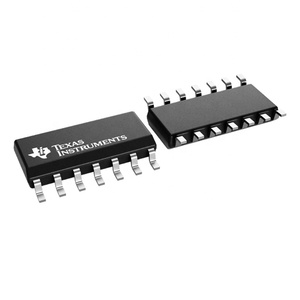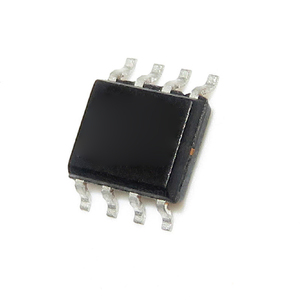Programmable Current Source Ic























 1/20
1/20




 1/5
1/5




 1/3
1/3









 1/3
1/3




 1/2
1/2






 1/9
1/9








 1/2
1/2
About programmable current source ic
Where to Find Programmable Current Source IC Suppliers?
China remains a central hub for semiconductor component manufacturing, with key suppliers of programmable current source ICs concentrated in major electronics production regions including Nanjing, Shenzhen, and Shantou. These industrial clusters offer access to vertically integrated supply chains, supporting rapid prototyping and scalable production. Shenzhen, in particular, hosts over 70% of China’s active electronic component distributors, leveraging proximity to semiconductor foundries and logistics gateways for efficient global distribution.
The region's mature ecosystem enables tight coordination between IC design houses, packaging facilities, and testing labs—many operating within a 50km radius. This integration reduces lead times for standard orders to 15–25 days and supports flexible MOQ structures, from single-piece sampling to bulk shipments exceeding 2,500 units. Localized production also contributes to cost efficiency, with average pricing 20–30% below Western-distributed equivalents due to reduced overhead and direct sourcing channels.
How to Choose Programmable Current Source IC Suppliers?
Procurement decisions should be guided by structured evaluation criteria focused on technical reliability, operational performance, and transaction security.
Technical & Product Compliance
Verify that components meet recognized industry standards such as RoHS and ISO/TS 16949 where applicable. While formal certifications are not always listed at the product level, consistent compliance is indicated by supplier adherence to standardized packaging, traceable batch numbering, and documented electrical specifications (e.g., output accuracy, thermal stability). Request test reports or SPICE models for critical applications involving precision regulation or high-reliability systems.
Production and Inventory Capability
Assess supplier infrastructure based on available data:
- Active inventory across multiple part numbers indicates robust stock management
- On-time delivery rates exceeding 95% correlate with stable fulfillment capacity
- Response times under 4 hours suggest dedicated customer support teams
Cross-reference product availability with minimum order requirements—suppliers offering 1-piece MOQs typically cater to R&D and prototyping demand, while higher MOQs (50–2500 pieces) align with volume production needs.
Transaction Risk Mitigation
Prioritize suppliers with verifiable transaction histories and use secure payment methods such as escrow services for initial orders. Analyze reorder rates as an indicator of customer satisfaction—lower rates (<15%) may reflect niche positioning or limited customization, whereas higher rates (35%+) suggest broader market adoption. Conduct sample testing to validate parametric performance against datasheet claims before scaling procurement.
What Are the Best Programmable Current Source IC Suppliers?
| Company Name | Location | Main Product Lines | Online Revenue | On-Time Delivery | Avg. Response | Reorder Rate | MOQ Range | Price Range (USD) |
|---|---|---|---|---|---|---|---|---|
| Nanjing Hser Electronic Technology Co., Ltd. | Nanjing, CN | Power Management (PMIC), Linear ICs, Transistors | US $300+ | 100% | ≤1h | <15% | 1–2500 pcs | $0.01–2.74 |
| Shenzhen By Technology Co., Ltd. | Shenzhen, CN | Power Management (PMIC), Connectors, Headers | US $30,000+ | 100% | ≤1h | <15% | 50 pcs | $0.59–1.44 |
| GOODVIEW GLOBAL LIMITED | Hong Kong, CN | PMIC, Microcontrollers, FPGAs, Digital Isolators | US $1,300,000+ | 95% | ≤4h | 38% | 1–2500 pcs | $0.23–5.53 |
| Shantou Xinjing Microelectronics Co., Ltd. | Shantou, CN | PMIC, LED Drivers, Specialized ICs | US $50,000+ | 97% | ≤5h | 20% | 1–50 pcs | $0.20–36.00 |
| Shenzhen Asia Ocean Electronics Co., Ltd. | Shenzhen, CN | PMIC, Sensors, Auto Connectors | US $10,000+ | 91% | ≤10h | 36% | 1–116 pcs | $0.55–2.60 |
Performance Analysis
Suppliers like Nanjing Hser and Shenzhen By Technology demonstrate strong operational discipline with 100% on-time delivery and sub-1-hour response times, making them suitable for time-sensitive procurement cycles. GOODVIEW GLOBAL LIMITED stands out in scale, reporting over US $1.3 million in online revenue and a 38% reorder rate, indicating sustained market presence and product reliability. Shenzhen-based suppliers generally offer tighter MOQ flexibility and faster communication, while larger-volume providers such as GOODVIEW accommodate diverse configurations across battery management, industrial control, and sensor interface applications. For cost-sensitive designs, options below $0.50 per unit are available from multiple sources, though higher-priced components (e.g., XCV200E-6BG352I at $34) serve specialized or programmable logic-integrated functions.
FAQs
How to verify programmable current source IC supplier reliability?
Evaluate on-time delivery records, response speed, and transaction volume. Request component traceability data and confirm consistency in packaging and labeling. Third-party platform metrics provide objective benchmarks for performance history and dispute resolution effectiveness.
What is the typical sampling timeline for ICs?
Standard samples ship within 3–7 days when in stock. Lead times may extend to 10–15 days for backordered or factory-direct items. Air freight adds 5–8 days for international delivery.
Can suppliers provide custom programming or binning?
Most listed suppliers distribute standard-grade ICs. Custom programming or parameter binning requires engagement with original manufacturers or authorized partners. Confirm whether firmware-level configurability is supported by the specific IC model prior to integration.
Do suppliers support small-batch or prototype orders?
Yes, several suppliers offer 1-piece MOQs, particularly beneficial for engineering validation and low-volume testing. Pricing per unit is typically higher at this level but decreases significantly at 50+ and 2500+ piece thresholds.
What are common applications for programmable current source ICs?
These ICs are widely used in battery charging systems, LED drivers, sensor excitation circuits, and industrial 4–20mA transmitters. Key selection criteria include output accuracy, thermal drift characteristics, compliance voltage range, and interface type (analog/digital control).
















































































































